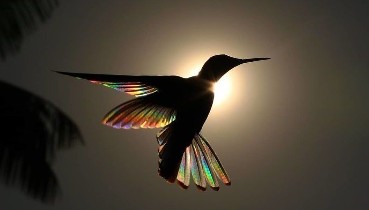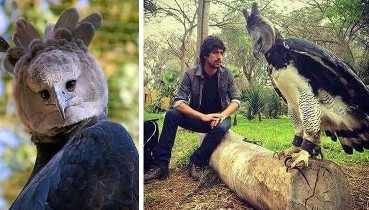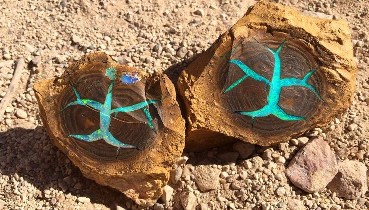
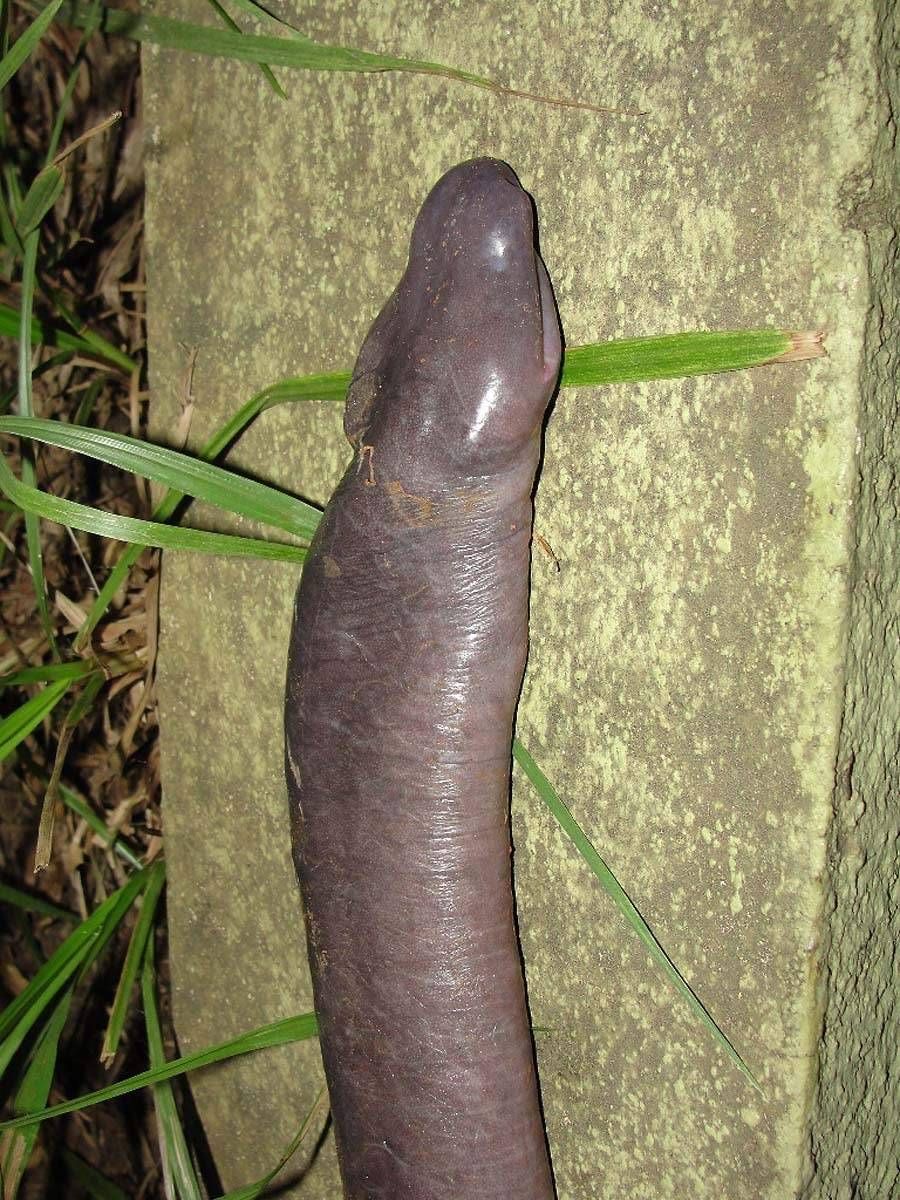
22 of the world’s weirdest wildlife
Louis Armstrong was right when he thought to himself “what a wonderful world” we live in. It’s also a weird world. As with humans, it would be a dull planet if every animal looked and behaved exactly the same. A bit of ‘strange’ or ‘different’ is a good thing.
Take giraffes, for example. They’re such a common sight on many safaris that we take for granted just what a bizarre animal they are, with a towering neck and a tongue that can strip leaves from thorny branches. These animals grow to such a great height that they need to splay their legs to bend low enough to drink water, a system of valves kicking in to stop too much blood rushing to their head.
But giraffes are just one example of the wonderful species that travellers can discover on their journeys. From Australia to Scotland to Venezuela, it’s possible to find frogs, fish, birds, primates and other creatures large and small that stand out for their incredible colourings, patterns and physical characteristics, and remarkable behaviours and abilities. Here, we celebrate some of the most striking and unusual animals that live on Earth, and share advice on where and how to find them.
1. Manatee

Manatees are also known as ‘sea cows’ (Alamy)
Too much time at sea (or on the rum) must do something to the mind, as sailors across history apparently mistook manatees – large, slow-moving, aquatic mammals – for ‘women of the sea,’ or mermaids. Also known as sea cows, these herbivorous hulking creatures feed mainly on sea grass, scoffing more than a tenth of their bodyweight each day. They have a flat, paddle-shaped tail and come up for air every few minutes.
Where to see?Florida’s Crystal River is a known hotspot, with manatee-spotting tours and the chance to snorkel with them. Belize is also known to have good opportunities
to spend time with manatees, which are also found in Costa Rica, Mexico and Jamaica. Manatees are not to be confused with their cousins, dugongs, another sea cow species found around Australia’s Great Barrier Reef, Thailand and elsewhere.
Read next Swimming with manatees in the Crystal River, Florida
2. Tarsier

Tarsiers have massive eyes (Alamy)
The tarsier’s an animal that seems to be taking the phrase ‘eyes bigger than your stomach’ as a literal challenge. The little, leaping primates have massive eyes, long, thin alien-like fingers and heads that rotate like they’re auditioning for a part in a remake of The Exorcist. Sadly, their cuteness has made them popular over the years as pets or as props forced to pose for tourist photos, causing them distress.
Where to see? The International Union for Conservation of Nature (IUCN) lists more than a dozen species of tarsier across South-East Asia, including the Philippines, Malaysia and Indonesia, several of which are Endangered or Critically Endangered. Bohol in the Philippines is a good place to see tarsiers; try one of the local sanctuaries, such as Tarsier Conservation Area.
3. Kākāpō

Owl parrots are another species of flightless bird (Alamy)
New Zealand’s birds must love the ground. The round-faced kākāpō, also known as an owl parrot, is another species of endemic flightless bird, the only flightless parrot on Earth. It’s wings help with balance and to ‘parachute’ when jumping from tall trees to the forest floor. The birds are known to freeze when they feel threatened, to blend into the forest greenery and escape predators. Māori and European settlers used to keep the birds as pets. They’re now listed as Critically Endangered, largely due to habitat loss and predatory invasive species.
Where to see? The small number of remaining kākāpō exist on a handful of predator-free, sanctuary islands, under close supervision, mostly near Stewart Island, Fiordland and Little Barrier Island in the Hauraki Gulf. The general public’s currently unable to view this species in the wild, due to restrictions on protected habitats.
4. Rock Agama

Rock agamas have striking colours (Graeme Green)
If any creature looks like it doesn’t really belong to this planet, it’s the rock agama. The Joseph And The Amazing Technicolour Dreamcoat of the lizard world is more like something from an alien world in a cartoon. Its bright orange or red head gives way to a luminous blue, mosaic-patterned body and tail, although female rock agamas are a duller brown.
Where to see? Rock agamas are found across Sub-Saharan Africa, including Zambia, South Africa, Mozambique and Botswana. A good bet to see red-headed rock agamas is Ruaha NP in Tanzania; keep an eye out on rocks where males like to show off their colours to attract females.
5. Maned Wolf

Maned wolves live in South America (Alamy)
Despite its name and fox-like appearance, the maned wolf is neither a wolf or a fox. It is, though, the largest canid species in South America, with large ears, a thick mane and long black legs that help the animals see out from long grass and to run at speeds up to 75km an hour. Rare, shy and elusive, you probably won’t get close enough to discover that maned wolf urine has a powerful aroma, said to remind people of a skunk’s smell.
Where to see? Maned wolves live in South America, including Brazil, Paraguay, Bolivia and Argentina, though they’re listed as Endangered in Argentina. The best plan is to take a specialist maned wolf-spotting wildlife safari in the vast Cerrado region of tropical savannah in Brazil, such as Emas NP.
Try next Quiz: Can you identify these weird and unusual animals?
6. Colugo

Colugos are also known as flying lemurs(Shutterstock)
Better known as flying lemurs, colugos are arboreal mammals often seen gripping onto tall tropical tree trunks across South-East Asia, with two species: Sunda and Philippine. Sometimes mistaken for bats, their closest relatives are actually primates. They can’t fly, but a membrane that extends between their limbs works like wings, allowing them to glide great distances from tree to tree or from the canopy down to the ground, like miniature wingsuit pilots.
Where to see? Flying lemurs are found across South-East Asia, including the Philippines, Malaysia, Vietnam, Cambodia and Laos. The Malaysian island of Langkawi is a good spot, with some hotels taking guests on nature walks to locate the otherwise hard-to-find tree-huggers.
7. Komodo Dragon

Komodo dragon, Rinca Island, Indonesia (Shutterstock)
Komodo dragons look like survivors from the age of dinosaurs. A type of monitor lizard, they can grow up to three-metres long and 300lb, making them the world’s largest and heaviest lizard. An apex predator, these meat-eating monitors have glands that secrete venom in their prey. They’re able to eat more than 80% of their own body weight in one sitting, and have been known to feed on other Komodo dragons. They’re also excellent swimmers.
Where to see? Komodo island in eastern Indonesia is home to around 4,000 dragons. Komodo National Park, which covers the island and nearby Rinca and Padar, was established to protect the lizards in 1980, becoming a UNESCO World Heritage site in 1991. Take a walking tour with a ranger to see the dragons and other animals.
8. Basking shark

Basking shark, Coll island, Scotland (Shutterstock)
No one’s yet managed to communicate to basking sharks that it’s rude to eat with your mouth open. The second largest living fish after the whale shark can grow to lengths of 12 metres, moving through the water with cavernous mouths gaping open to filter-feed on plankton. Harmless to humans, the mega-mouthed sharks often swim close to the surface, so they appear to be basking in the sun.
Where to see? Basking sharks are found worldwide, including the Atlantic, Indian and Pacific oceans. From July-September, they can be seen in Scotland, as they migrate to the Inner Hebrides to feast on plankton. You can often see the big fish around Coll, Tiree, Canna and Lewis’s Mangersta Head. Tours, for spotting sharks or swimming/snorkelling with them, leave from Oban.
Read next: 9 marvellous marine species to spot around the UK this summer
9. Aye-aye lemur

Aye-aye lemur of Madagascar (Shutterstock)
The aye-aye is an unusual lemur species that’s native to the biodiverse island of Madagascar. The world’s largest nocturnal primate has large bat-like ears, a possum-like face, rodent-like teeth, long fingers and staring eyes. A fascinating sight for wildlife lovers, many local Malagasy people believe the aye-aye is a harbinger of misfortune, bad for crops, fertility or even causing the death of a villager; this means they’ve been persecuted and killed, and are now listed as Endangered.
Where to see? Aye-Ayes can be seen on Madagascar’s east coast and north-western forests, with the small Farankaraina reserve on the Masoala peninsula one of a few locations where they can reliably be found.
10. Kiwi

A flightless Kiwi bird, New Zealand (Shutterstock)
Not to be mistaken for the fruit, the kiwi is a flightless bird, about the size of a turkey, with a long, pointed beak. It’s a close relative of the emu and cassowary, with fuzzy hair-like feathers. Chunky, muscular legs account for a third of their body weight, making them speedy movers. The Māori consider the endemic bird special, calling it the ‘god of the forest’. ‘Kiwi’ has subsequently become shorthand for a person from New Zealand, a nickname for NZ soldiers from the Second World War that stuck.
Where to see? It’s possible to spot kiwis in the wild on Ulva Island, a predator-free sanctuary near Stewart Island. Kiwis are also thriving on Kapiti Island Nature Reserve. The National Kiwi Hatchery at Rotorua’s Rainbow Springs plays an important role in kiwi conservation – it’s possible to take tours. Or try a night walk at the 225-hectare Zealandia Karori Sanctuary in Wellington.
11. Glass frog

Glass frog are translucent (Shutterstock)
Glass frogs get their name from their translucent skin – it’s possible to see through the amphibians’ abdomens to their hearts and intestines. With vibrant green skin on their backs, this see-through ability makes it even easier for the frogs to camouflage themselves against the specific hues of forest plants, better to avoid being munched. Sadly, their big eyes and visible interiors also made them popular as pets, a common item sold in the global wildlife trade.
Where to see? Glass frogs are found in tropical forests in Central and South America, including Costa Rica, Panama, Colombia, and Ecuador. They’re commonly seen in Tortuguero National Park, La Selva Protected Zone and Caño Island Biological Reserve in Costa Rica, though an expert wildlife guide is recommended as their camouflage makes it tricky to spot them.
12. Pangolin

Pangolins curl into a ball when threatened (Shutterstock)
Their name coming from the Malay ‘pengguling’, meaning ‘one who rolls up’, these remarkable mammals are covered in scales and known to curl up into a ball when threatened. They have incredibly long, muscular, sticky tongues, longer than the animal’s body and head when extended, ideal for lapping up ants and termites; adult pangolins are able to consume more than 70 million insects every year. Pangolins have the unfortunate tag as ‘the most trafficked animal in the world’ (more than one million over the last decade), their scales used for traditional ‘medicine’ in China and Vietnam (despite keratin having no medicinal properties) and sold as luxury meat across Asia, meaning all eight species are fighting for survival.
Where to see? Pangolins live in Africaand Asia. The best chance to see them is on safari in Botswana’s Okavango and Central Kalahari, Zambia’s Luangwa Valley, Hwange in Zimbabwe and South Africa’s Kruger National Park, although sightings are rare.
Read next: Pangolin conservation in South Africa
13. Shoebill

A pre-historic looking shoebill (Shutterstock)
Also known as a whalehead, the prehistoric-looking shoebill is a large waterbird, often referred to as a stork, though it’s more closely related to pelicans and herons. As well as the distinctive bill, the birds can grow to be three-metres tall, with a wingspan reaching over five metres, but it’s their glaring eyes that make them look so fearsome. Shoebills are ambush predators, standing motionless in water, using their giant bill to chomp prey, including fish, frogs, lizards and even baby crocodiles.
Where to see? Uganda offers some of the best opportunities to see this rare bird, including Murchison Falls National Park in Uganda and Queen Elizabeth NP. The little-known Bangweulu Wetlands in northern Zambia is another good location, especially June and July to see chicks.
14. Proboscis monkey

Proboscis monkey can be found in Borneo (Graeme Green)
The proboscis monkey’s bulbous, pendulous noses aren’t just for appearances. According to scientists, the enlarged organs create an echo chamber that amplifies males’ calls, impressing the ladies and intimidating rivals. They’re accomplished swimmers, unusual for primates, using their webbed feet to swim towards food or away from predators. The reddish coloured monkeys also have pot bellies to complete their look.
Where to see? There are thought to be around 7,000 proboscis monkeys left on the island of Borneo. Malaysia’s Bako NP is a great place to see them, alongside other wildlife (silver leaf monkeys, bearded pigs, pit vipers…).
15. Platypus

A platypus is a semiaquatic egg-laying mammal (Shutterstock)
Like one of Dr Frankenstein’s experiments, only cuter, the platypus is nature’s original mash-up, with a body like an otter’s, a beaver-like tail and a duck’s bill and webbed feet. So strange is the duck-billed platypus that British scientists who saw a specimen for the first time in the late 1700s thought it was a hoax. Platypuses are venomous and, like sharks, they’re able to detect underwater prey using electroreception. Oddly for a mammal, they also lay eggs.
Where to see? Platypuses are mainly found in eastern Australia. Eungella National Park in Queensland and Latrobe in Tasmania have healthy populations; Broken River in Eungella has vantage points and bridges where they’re often seen swimming below. Atherton Tablelands (Far North Queensland) also has regular sightings. They’re also being reintroduced to New South Wales’ Royal National Park, the oldest national park in Australia.
16. Capybara

The world’s largest roden, the capybara (Graeme Green)
Capybaras are the world’s largest rodent, like a giant hamster or guinea pig (to which it’s closely related). These semi-aquatic animals have partially webbed feet that help them swim Central and South America’s lakes, rivers and wetland areas. They’re vegetarians, feeding primarily on grasses, fruits, aquatic plants and tree bark, though these picky eaters are sometimes known to concentrate solely on one type of grass. They’re also highly sociable animals, living in large groups.
Where to see? You can find capybara from Mexico to Brazil and Argentina. The massive Los Llanos (The Plains), stretching across Venezuela and Colombia, has plenty of the furry animals living alongside giant anacondas, caiman and monkeys.
Read next: Top 7 must-see wildlife wonders in Brazil’s Pantanal wetlands
17. Wobbegong

Wobbegong shark on the ocean floor (Shutterstock)
Unlike most sharks, wobbegongs don’t patrol through the ocean, searching for prey. Instead this bottom-dwelling beast rests on the sea floor, like a rug, explaining it’s alternative name: carpet shark. With plenty of camouflage, the massive-headed sharks wait for creatures to come into range, then snap open their huge jaws, creating a suction that hoovers their meal into their gaping mouth.
Where to see? Twelve species are found in the Pacific and Indian oceans’ tropical waters, mainly around Australia and Indonesia. Fantastic scuba destination Raja Ampat offers good chances to see them, alongside other sharks, manta rays and colourful fish.
18. Southern cassowary

Southern cassowary on the beach (Shutterstock)
The southern cassowary is another animal that looks like it might have been drawn in crayon by a child. These powerful, feisty birds, second largest in the world after the ostrich, have a vivid blue neck and red throat wattle, with a large casque (keratin-coated ‘helmet’), as well as sharp claws and strong legs that allow them to leap high, run fast and deliver damaging kicks. They’re also known for an infrasonic boom used to communicate, including in courtship rituals.
Where to see? Southern cassowaries are endemic to north-east Australia, Papua New Guinea and Indonesia. Far North Queensland is the best place to spot these rare birds in the wild, especially in the tropical rainforests lying between Mission Beach to the Daintree Rainforest lowlands.
19. Aardwolf

An aardwolf comes out at sunset to forage in Southern Africa (Shutterstock)
Their name meaning ‘earth wolf’ in Afrikaans, the aardwolf is neither aardvark or wolf, nor a combination of both, but actually a member of the hyena family. Nocturnal animals, they spend their days underground in burrows, coming out to feed on up to 200,000 termites per night, using long sticky tongues to lap up their insect banquet. They’re also able to puff up their mane and body hair to look much bigger than they really are.
Where to see? Aardwolves like scrubland and savannahs in eastern, north-eastern and southern Africa, including Namibia, Angola, Zimbabwe and Tanzania. South Africa has some particularly good locations, including Sandveld Nature Reserve, Sterkspruit Nature Reserve and Mokala NP.
20. Magnificent frigatebird

The male magnificent frigatebird has a red throat which inflates to attract a mate (Shutterstock0
The Galápagos Islands are home to remarkable wildlife, including the odd-looking blue-footed booby. Unfairly sitting in the shadows of the booby, the magnificent frigatebird is a striking pterodactyl-like seabird decked out in red. The male has a large crimson throat sac that it inflates to attract a mate, accompanied by a clacking sound it produces with its beak. Magnificent frigatebirds have a wingspan measuring up to five metres across, allowing them to fly long distances over sustained periods.
Where to see? Magnificent frigatebirds nest in Florida and the Caribbean, and on the Pacific coast of Mexico and South America, including Ecuador. Head to Galápagos, and you’ll also see tortoises, iguanas, sharks and sealions living alongside the magnificent ones.
21. Saiga

The saiga has an unusual nose (Shutterstock)
The saiga antelope has a bulbous, swollen and flexible nose designed to filter out the dust during dry summers in Central Asia and to warm the colder air in winter. These Critically Endangered, nomadic animals, a type of herbivorous antelope, are known to travel up to 1,000 kilometres between the summer and winter seasons. Males have distinctive ridged horns, which are also consumed in traditional Chinese ‘medicine’ (despite no benefits).
Where to see? Saiga are found in Kazakhstan, Mongolia, Russia, Turkmenistan and Uzbekistan. With numbers depleted catastrophically over the last three decades, they’re not a common sight. They can be seen in Kazakhstan’s Betpak-Dala desert region, though neither getting there or finding saiga are easy tasks.
22. Pink dolphin

The pink dolphin lives in the Amazon (Shutterstock)
The Amazon river dolphin – or boto – lives in freshwater systems across the Amazon and Orinoco river basins. These dolphins aren’t born pink; they start grey and develop their colouring over time, with brighter pink males more attractive to females. The colouring’s thought to be scar tissue from rough play or fighting between males, with the pink getting brighter when the dolphins are flushed with excitement. They’re often seen swimming upside down, allowing them to look down at what’s in the water. Pink dolphins are the subject of several Amazonian myths, including that they whisk people away to magical underwater cities and that they transform at night into handsome men to seduce and impregnate local women.
Recommended Videos
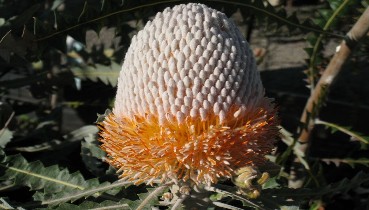 Acorn Banksia60 views
Acorn Banksia60 views 50 Beautiful Spine Tattoos That Make The Pain Worth It141 views
50 Beautiful Spine Tattoos That Make The Pain Worth It141 views-
Advertisements
 Edificio Mirador: A Vertical Neighborhood18 views
Edificio Mirador: A Vertical Neighborhood18 views The Beauty of the Sunset Enhanced by Glowing Stones on the Beach258 views
The Beauty of the Sunset Enhanced by Glowing Stones on the Beach258 views 20 Stunning Captures Of Cultural Diversity By Trevor Cole227 views
20 Stunning Captures Of Cultural Diversity By Trevor Cole227 views These Cakes Look Like They’ve Been Decorated With Needles And Threads64 views
These Cakes Look Like They’ve Been Decorated With Needles And Threads64 views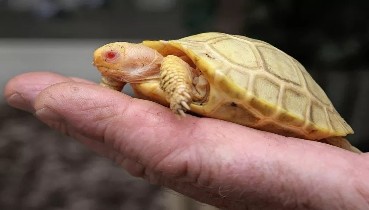 Switzerland Zoo Announces Birth of Rare Albino Giant Galapagos Tortoise: 'Phenomenon of Nature'60 views
Switzerland Zoo Announces Birth of Rare Albino Giant Galapagos Tortoise: 'Phenomenon of Nature'60 views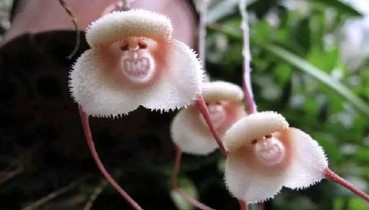 These ‘Monkey Face Orchid Flowers’ Are Fascinating (And Very Appropriately Named!)102 views
These ‘Monkey Face Orchid Flowers’ Are Fascinating (And Very Appropriately Named!)102 views
